Abstract
The pathways of bile acid synthesis in man were evaluated by studying the metabolism of 7α-hydroxycholesterol-4-14C and 26-hydroxycholesterol-16, 22-3H administered parenterally to individuals requiring external biliary drainage. Techniques for the identification of metabolites were thin-layer chromatography, column chromatography, gas-liquid chromatography with stream splitting, and crystallization to constant specific activity. It was found that both compounds were rapidly metabolized to bile acids and excreted in bile. Of the total radioactivity recovered in bile as bile acids, 87% of the 26-hydroxycholesterol-3H and 90% of the 7α-hydroxycholesterol-14C was found to be metabolized to both chenodeoxycholate and cholate. Compared to 7α-hydroxycholesterol, a greater proportion of 26-hydroxycholesterol was found to be metabolized to chenodeoxycholate.
These findings indicate that both 7α-hydroxycholesterol and 26-hydroxycholesterol can be intermediates in the metabolism of cholesterol to bile acids in man. The observation that conversion to cholate takes place less readily after C-26 hydroxylation is consistent with previous findings in other species.
Full text
PDF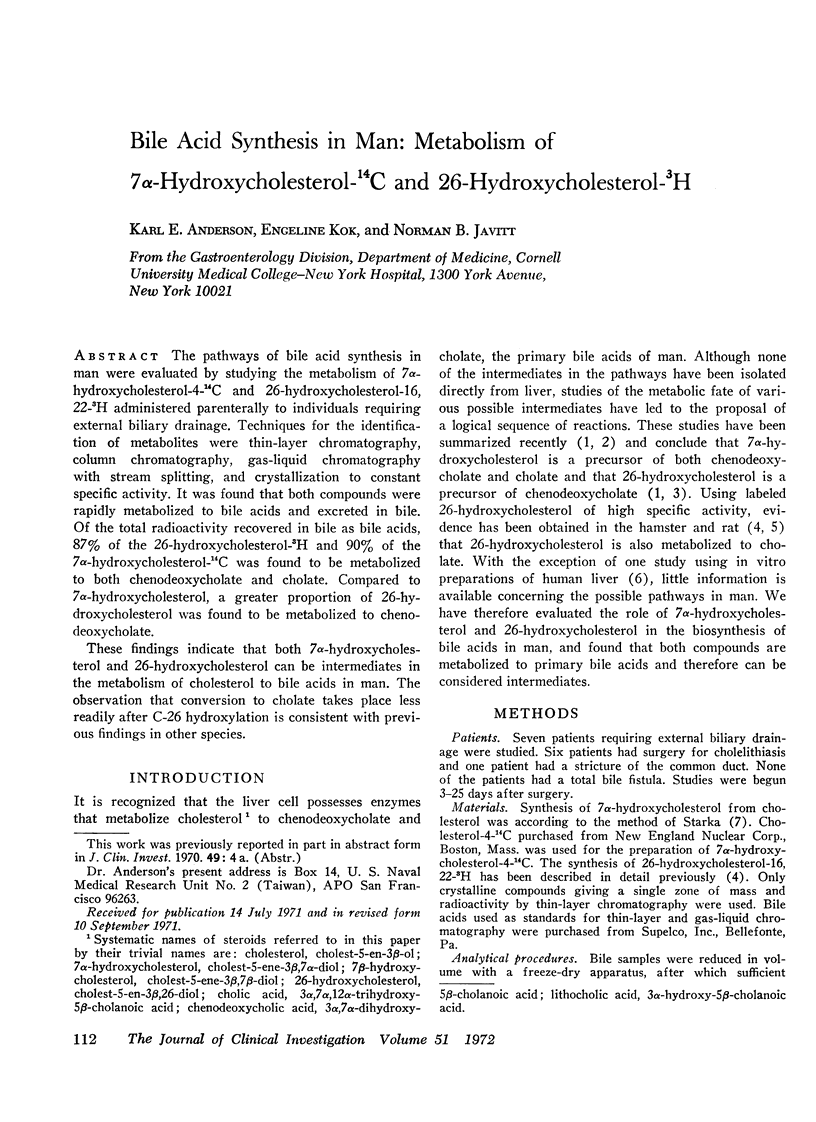
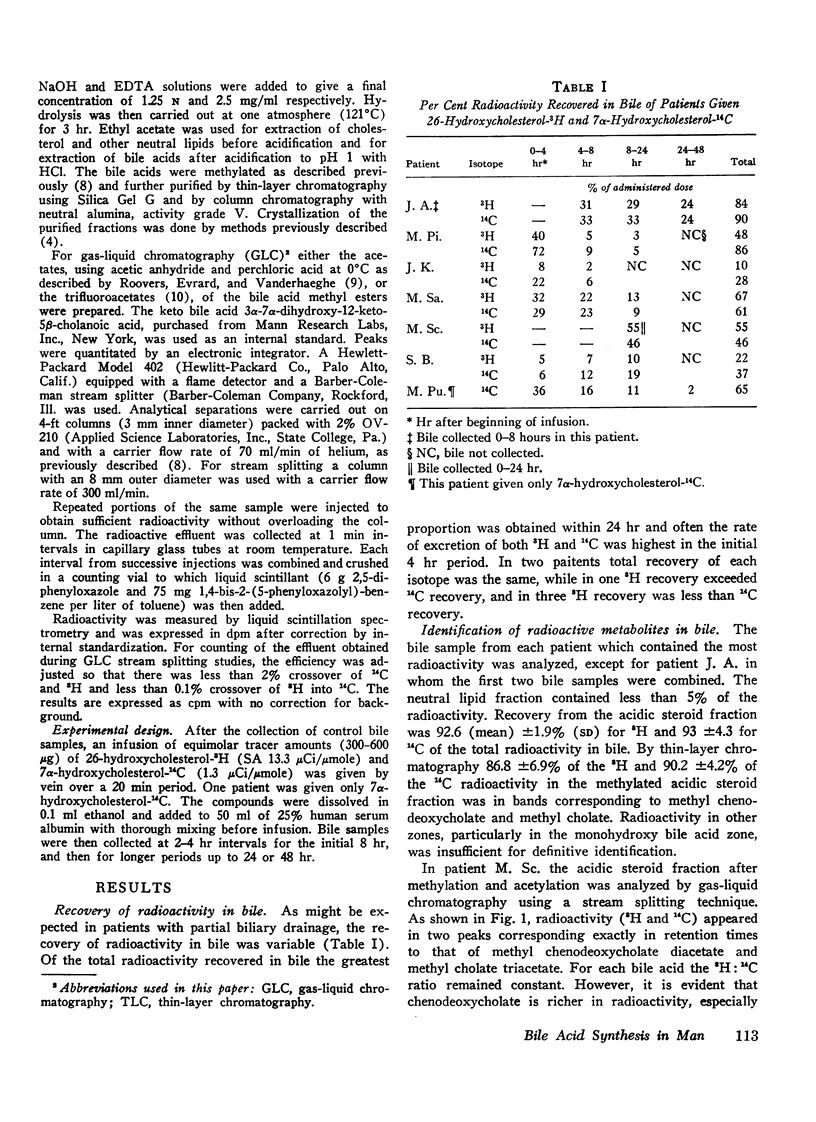
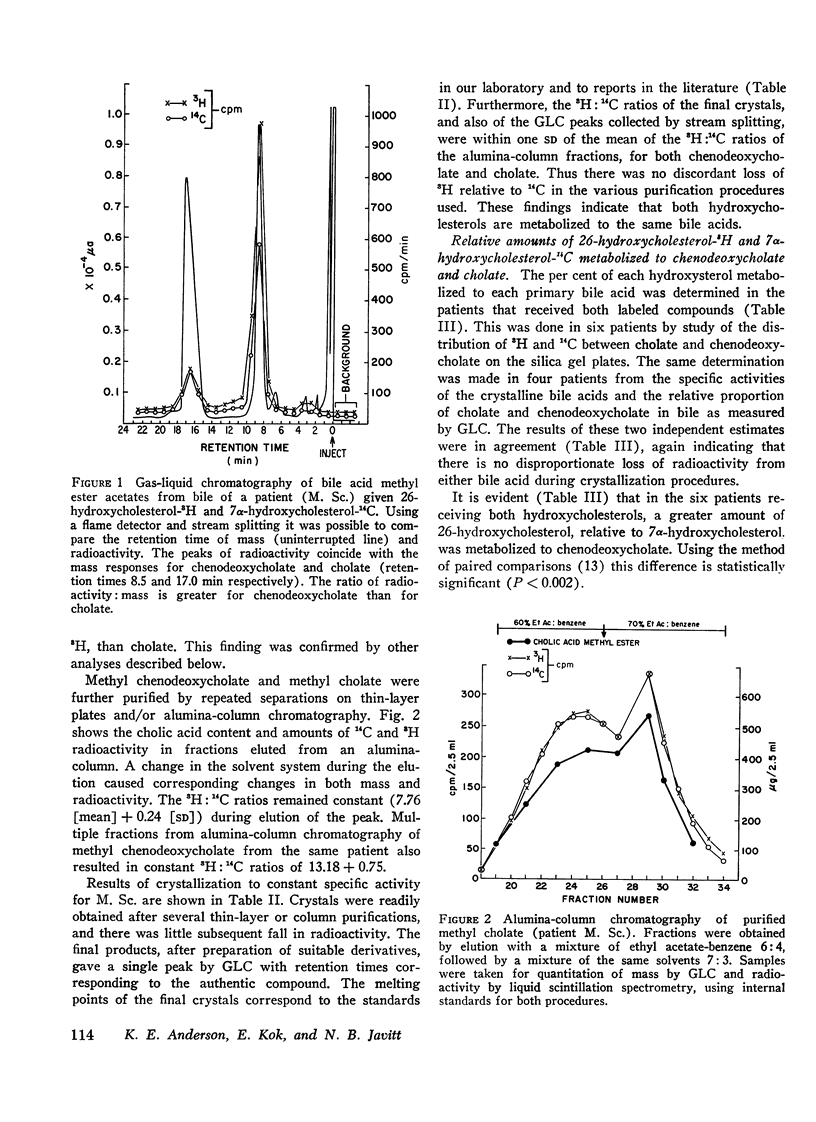
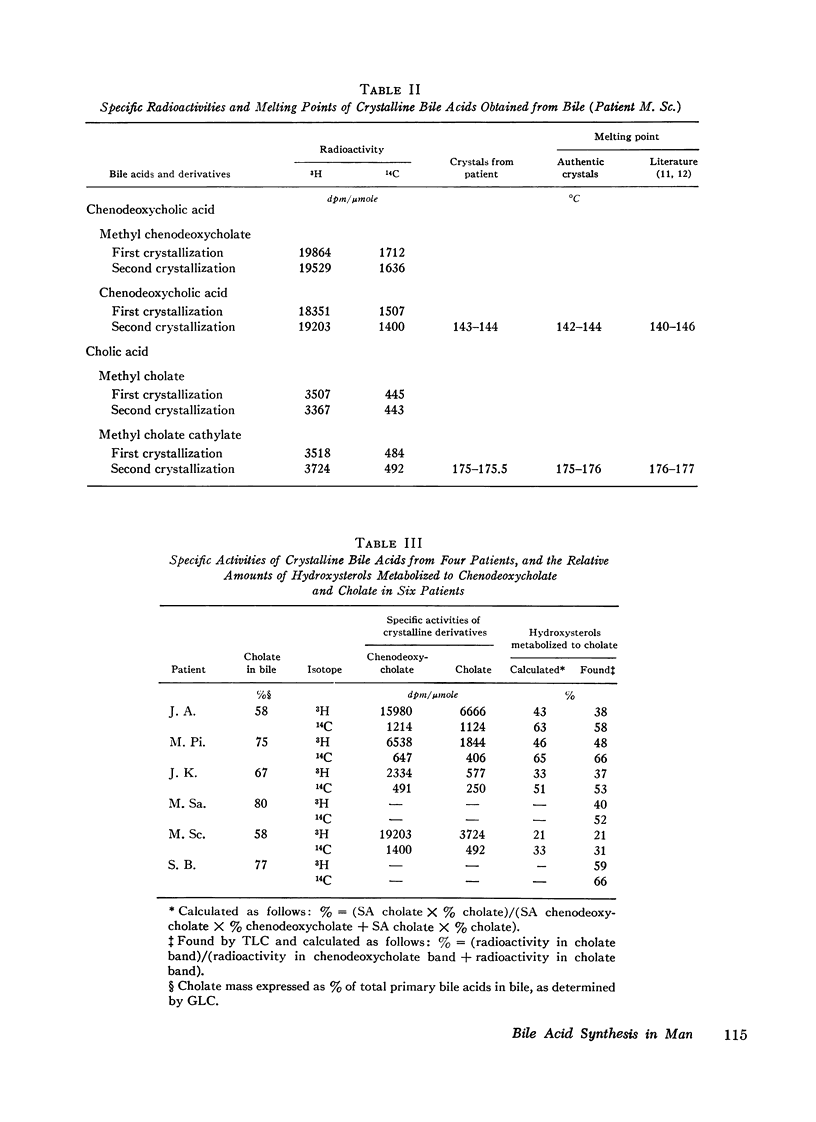
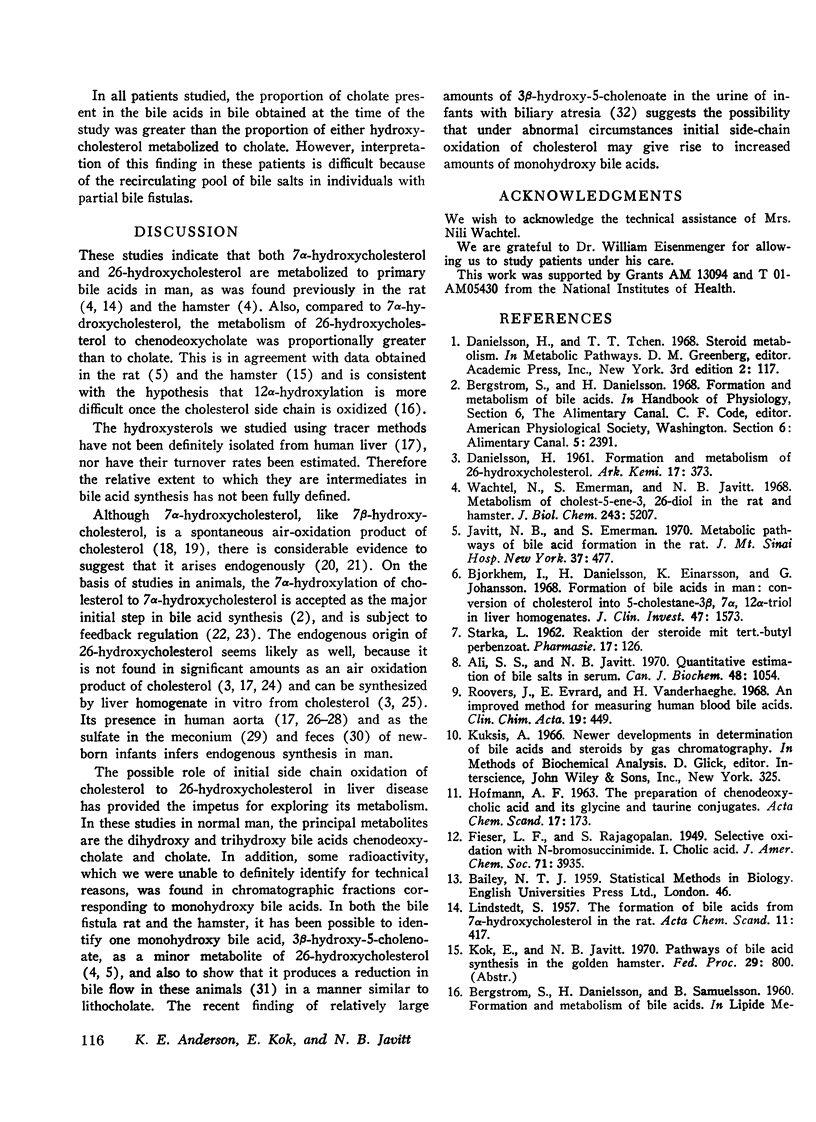
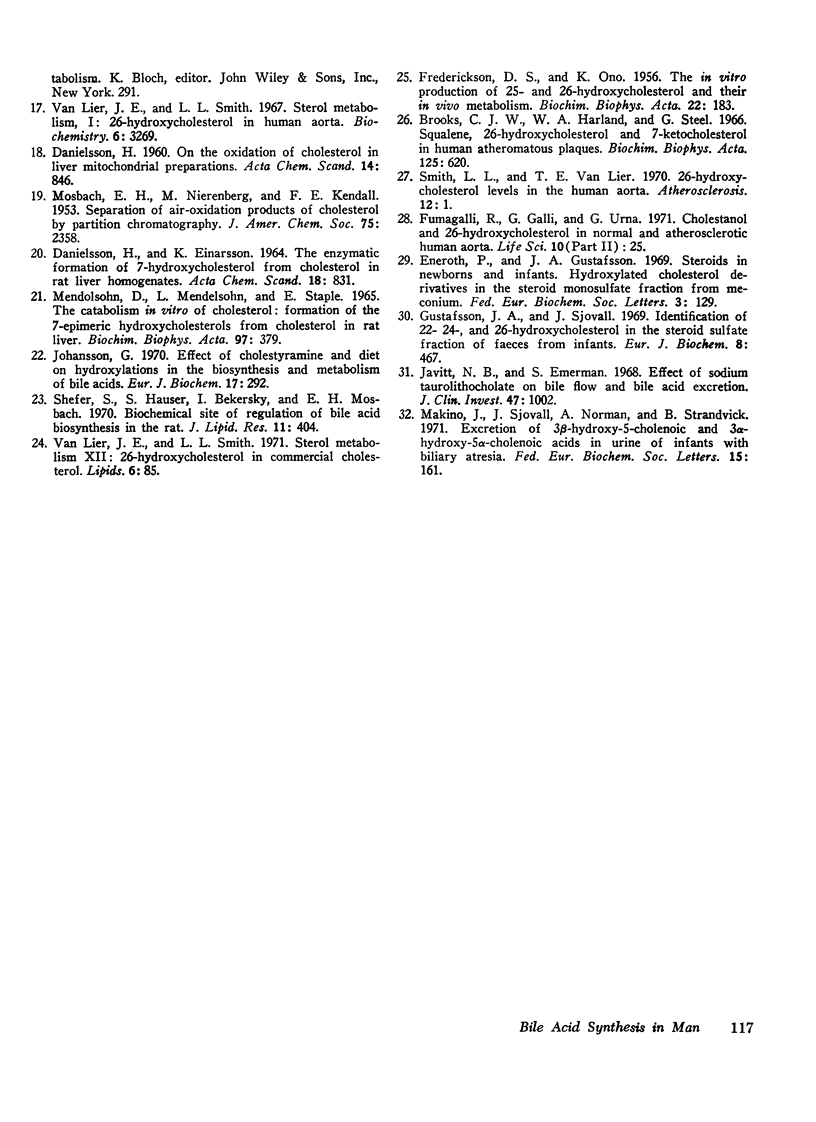
Selected References
These references are in PubMed. This may not be the complete list of references from this article.
- Ali S. S., Javitt N. B. Quantitative estimation os bile salts in serum. Can J Biochem. 1970 Sep;48(9):1054–1057. doi: 10.1139/o70-166. [DOI] [PubMed] [Google Scholar]
- Björkheim I., Danielsson H., Einarsson K., Johansson G. Formation of bile acids in man: conversion of cholesterol into 5-beta-cholestane-3-alpha, 7-alpha, 12-alpha-triol in liver homogenates. J Clin Invest. 1968 Jul;47(7):1573–1582. doi: 10.1172/JCI105849. [DOI] [PMC free article] [PubMed] [Google Scholar]
- Brooks C. J., Harland W. A., Steel G. Squalene, 26-hydroxycholesterol and 7-ketocholesterol in human atheromatous plaques. Biochim Biophys Acta. 1966 Dec 7;125(3):620–622. doi: 10.1016/0005-2760(66)90055-5. [DOI] [PubMed] [Google Scholar]
- Eneroth P., Gustafsson J. -A. Steroids in newborns and infants. Hydroxylated cholesterol derivatives in the steroid monosulphate fraction from meconium. FEBS Lett. 1969 Apr;3(2):129–132. doi: 10.1016/0014-5793(69)80115-8. [DOI] [PubMed] [Google Scholar]
- FREDRICKSON D. S., ONO K. The in vitro production of 25- and 26-hydroxycholesterol and their in vivo metabolism. Biochim Biophys Acta. 1956 Oct;22(1):183–184. doi: 10.1016/0006-3002(56)90236-0. [DOI] [PubMed] [Google Scholar]
- Fumagalli R., Galli G., Urna G. Cholestanol and 26-hydroxycholesterol in normal and atherosclerotic human aorta. Life Sci II. 1971 Jan 8;10(1):25–33. doi: 10.1016/0024-3205(71)90221-9. [DOI] [PubMed] [Google Scholar]
- Gustafsson J. A., Sjövall J. Identification of 22-, 24- and 26-hydroxycholesterol in the steroid sulphage fraction of faeces from infants. Eur J Biochem. 1969 Apr;8(4):467–472. doi: 10.1111/j.1432-1033.1969.tb00550.x. [DOI] [PubMed] [Google Scholar]
- Javitt N. B., Emerman S. Effect of sodium taurolithocholate on bile flow and bile acid exeretion. J Clin Invest. 1968 May;47(5):1002–1014. doi: 10.1172/JCI105790. [DOI] [PMC free article] [PubMed] [Google Scholar]
- Javitt N. B., Emerman S. Metabolic pathways of bile acid formation in the rat. Mt Sinai J Med. 1970 Jul-Aug;37(4):477–481. [PubMed] [Google Scholar]
- Johansson G. Effect of cholestyramine and diet on hydroxylations in the biosynthesis and metabolism of bile acids. Eur J Biochem. 1970 Dec;17(2):292–295. doi: 10.1111/j.1432-1033.1970.tb01167.x. [DOI] [PubMed] [Google Scholar]
- Kuksis A. Newer developments in determination of bile acids and steroids by gas chromatography. Methods Biochem Anal. 1966;14:325–454. doi: 10.1002/9780470110324.ch8. [DOI] [PubMed] [Google Scholar]
- MENDELSOHN D., MENDELSOHN L., STAPLE E. THE CATABOLISM IN VITRO OF CHOLESTEROL: FORMATION OF THE 7-EPIMERIC HYDROXYCHOLESTEROLS FROM CHOLESTEROL IN RAT LIVER. Biochim Biophys Acta. 1965 Feb 15;97:379–381. doi: 10.1016/0304-4165(65)90116-9. [DOI] [PubMed] [Google Scholar]
- Makino I., Sjövall J., Norman A., Strandvik B. Excretion of 3beta-hydroxy-5-cholenoic and 3a-hydroxy-5a-cholanoic acids in urine of infants with biliary atresia. FEBS Lett. 1971 Jun 10;15(2):161–164. doi: 10.1016/0014-5793(71)80047-9. [DOI] [PubMed] [Google Scholar]
- Roovers J., Evrard E., Vanderhaeghe H. An improved method for measuring human blood bile acids. Clin Chim Acta. 1968 Mar;19(3):449–457. doi: 10.1016/0009-8981(68)90272-6. [DOI] [PubMed] [Google Scholar]
- Shefer S., Hauser S., Bekersky I., Mosbach E. H. Biochemical site of regulation of bile acid biosynthesis in the rat. J Lipid Res. 1970 Sep;11(5):404–411. [PubMed] [Google Scholar]
- Smith L. L., Van Lier J. E. Sterol metabolism. 9.26-hydroxycholesterol levels in the human aorta. Atherosclerosis. 1970 Jul-Aug;12(1):1–14. doi: 10.1016/0021-9150(70)90078-x. [DOI] [PubMed] [Google Scholar]
- Van Lier J. E., Smith L. L. Sterol metabolism. I. 26-Hydroxycholesterol in the human aorta. Biochemistry. 1967 Oct;6(10):3269–3278. doi: 10.1021/bi00862a037. [DOI] [PubMed] [Google Scholar]
- Van Lier J. E., Smith L. L. Sterol metabolism. XII. 26-Hydroxycholesterol in commercial cholesterol. Lipids. 1971 Feb;6(2):85–87. doi: 10.1007/BF02531321. [DOI] [PubMed] [Google Scholar]
- Wachtel N., Emerman S., Javitt N. B. Metabolism of cholest-5-ene-3 beta, 26-diol in the rat and hamster. J Biol Chem. 1968 Oct 10;243(19):5207–5212. [PubMed] [Google Scholar]


